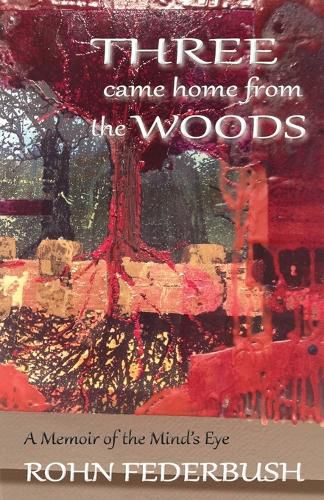Readings Newsletter
Become a Readings Member to make your shopping experience even easier.
Sign in or sign up for free!
You’re not far away from qualifying for FREE standard shipping within Australia
You’ve qualified for FREE standard shipping within Australia
The cart is loading…






What kind of story is Three Came Home from the Woods? Is it truly a story about Dissociative Identity Disorder (DID), formerly known as Multiple Personality Disorder, in the manner of Three Faces of Eve or Sybil? Or is it a contemporary allegory in which a woman coming of age in the 1960s is whipsawed between traditional and newly possible feminine roles and develops divergent personalities to cope will all that's demanded of her? Can we know for sure? And how clear is the line that separates the two? In her Preface author Rohn Federbush seems to suggest the latter is the case, but she sets her three "identities," her three "personalities," in the office of a therapist whose clear mission is to find a portal through which the three will step to emerge as one. She has left us, her readers, with a bit of a mystery to unravel, which is part of the fun of Three Came Home from the Woods. One thing we know for sure is that ninety percent of people afflicted with Dissociative Identity Disorder are women. Ms. Federbush shows remarkable vision in describing a woman's perception of that cusp between the 1950s and the 60s, when feminist horizons were expanding but obligations of wife, mother, daughter, and homemaker were bound as tightly as ever.
$9.00 standard shipping within Australia
FREE standard shipping within Australia for orders over $100.00
Express & International shipping calculated at checkout
What kind of story is Three Came Home from the Woods? Is it truly a story about Dissociative Identity Disorder (DID), formerly known as Multiple Personality Disorder, in the manner of Three Faces of Eve or Sybil? Or is it a contemporary allegory in which a woman coming of age in the 1960s is whipsawed between traditional and newly possible feminine roles and develops divergent personalities to cope will all that's demanded of her? Can we know for sure? And how clear is the line that separates the two? In her Preface author Rohn Federbush seems to suggest the latter is the case, but she sets her three "identities," her three "personalities," in the office of a therapist whose clear mission is to find a portal through which the three will step to emerge as one. She has left us, her readers, with a bit of a mystery to unravel, which is part of the fun of Three Came Home from the Woods. One thing we know for sure is that ninety percent of people afflicted with Dissociative Identity Disorder are women. Ms. Federbush shows remarkable vision in describing a woman's perception of that cusp between the 1950s and the 60s, when feminist horizons were expanding but obligations of wife, mother, daughter, and homemaker were bound as tightly as ever.